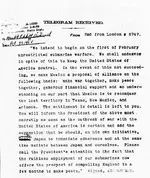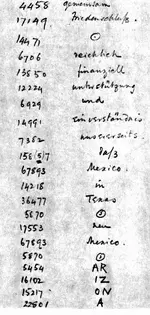Crow, muchas gracias for the clarity.
Don Jose, cafe con Kahlua, por favor.
I got sidetracked from the Obregon story when one of my friends told me of his experience at the south tip of Cozumel, in about 1970. At that time (way before all those nearby developments) the lighthouse keeper invited my friend to dinner. After dinner, and after several hours of enjoying tequila provided by my friend (the keeper provided the lobsters), the keeper invited my friend to the back of his small home and dipped his hand into a briny cistern (barrel) and pulled out a handful of cob coins. For fear of discovery, he kept his lifestyle simple: Picture a single light bulb and suspended hammocks for his family. My friend relieved the keeper of several cobs in exchange for a fair amount of currency. I heard the story of a nearby wreck and this keeper daily salvaging only enough to fill a tattered pocket--while he 'fished'. I doubt he ventured more than a couple miles from his home. The story has intrigued me ever since first hearing it, but, like many treasure stories, this teller has never returned to the area.
Don....
Don Jose, cafe con Kahlua, por favor.
I got sidetracked from the Obregon story when one of my friends told me of his experience at the south tip of Cozumel, in about 1970. At that time (way before all those nearby developments) the lighthouse keeper invited my friend to dinner. After dinner, and after several hours of enjoying tequila provided by my friend (the keeper provided the lobsters), the keeper invited my friend to the back of his small home and dipped his hand into a briny cistern (barrel) and pulled out a handful of cob coins. For fear of discovery, he kept his lifestyle simple: Picture a single light bulb and suspended hammocks for his family. My friend relieved the keeper of several cobs in exchange for a fair amount of currency. I heard the story of a nearby wreck and this keeper daily salvaging only enough to fill a tattered pocket--while he 'fished'. I doubt he ventured more than a couple miles from his home. The story has intrigued me ever since first hearing it, but, like many treasure stories, this teller has never returned to the area.
Don....




 and get the party started, its Saturday night, come on people get the conversations started. np
and get the party started, its Saturday night, come on people get the conversations started. np




